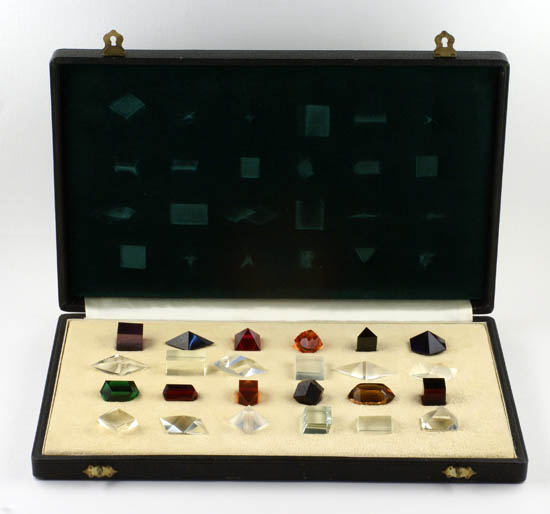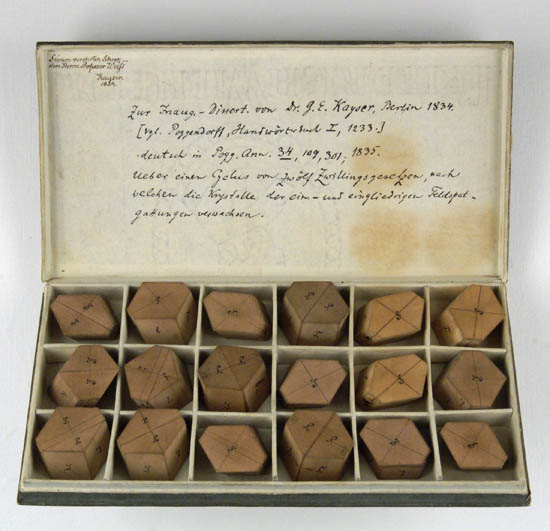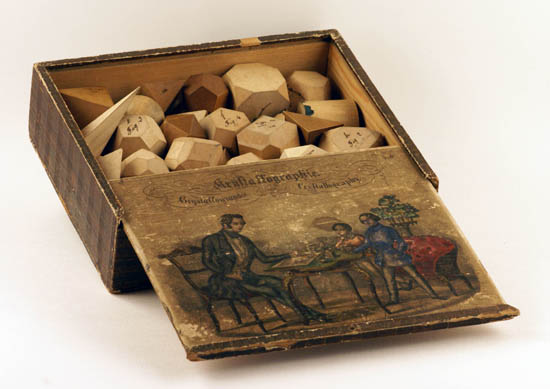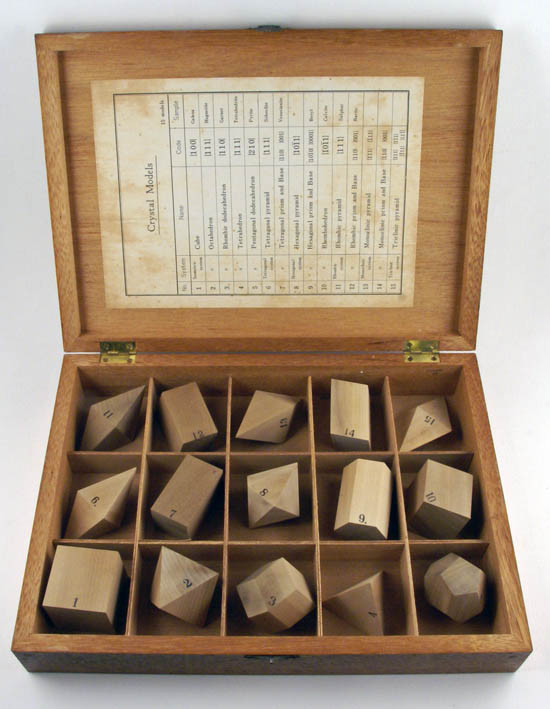Early Crystallographic Models
 Wednesday, March 17, 2010 at 11:00PM
Wednesday, March 17, 2010 at 11:00PM  Colored glass models, Unsigned, first half 20th century
Colored glass models, Unsigned, first half 20th century
 Wooden models of twinned feldspar crystals, G.E. Kayser, Berlin, 1834
Wooden models of twinned feldspar crystals, G.E. Kayser, Berlin, 1834
 Wooden models, Unsigned, late 19th century
Wooden models, Unsigned, late 19th century
 Wooden models, Unsigned, mid 20th century
Wooden models, Unsigned, mid 20th century
 Porcelain models, Unsigned [John Joseph Griffin], England, ca. 1841
Porcelain models, Unsigned [John Joseph Griffin], England, ca. 1841
There are far too many beautiful examples of glass, porcelain and wooden crystal models from the 18th and 19th century to display here — much more information can be found at The Virtual Museum of the History of Mineralogy. These once functional objects have long since been replaced in the teaching of mineralogy by computer models, but their present-day obsolescence only heightens their mysterious and sublime aura. Such interactive sculptures surely must have been seen and relished by the Surrealists, as Taglioni's Jewel Casket by Joseph Cornell reveals. Outside of their scientific context, there is even a prefiguration of minimalist sculpture — an unironic yet non-literal juxtaposition of organic processes and geometric perfection. There is, for me, a fascinating contradiction in the innocence of their toylike size and sentimental presentation given that crystallography — though largely esoteric and academic in its early phases — became the foundation for the most impactful material sciences of chemical and molecular engineering in the twentieth century, as well as the more potentially transfiguring twenty-first century developments in application of topography, virtual three-dimensional modeling systems, rapid prototyping and nanotechnology. The early crystallographic model is the self-anachronistic object par excellance.
 Joseph Cornell,
Joseph Cornell,  art,
art,  crystallography,
crystallography,  mineralogy
mineralogy 



